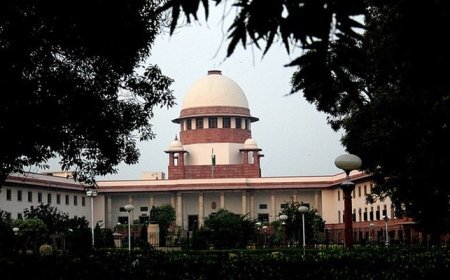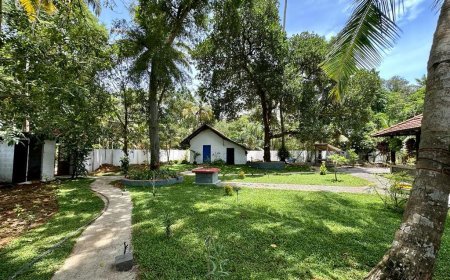Accounting for Borrowing Costs under AS 16 & Ind AS 23
Accounting for Borrowing Costs under AS 16 & Ind AS 23
Borrowing costs are an integral element of financial structuring and capital investment decisions. For accountants and financial professionals, the correct treatment of borrowing costs is essential to reflect the true and fair view of an enterprise’s financial position and performance. The accounting treatment of borrowing costs under AS 16 and its converged counterpart Ind AS 23 focuses primarily on the capitalisation versus expensing dichotomy and the determination of qualifying assets.
This article provides an expert-level discussion on the accounting for borrowing costs, examining both the Indian GAAP (AS 16) and Ind AS 23, highlighting conceptual underpinnings, key differences, and practical issues with interpretative guidance.
1. Objective of the Standard
The objective of both AS 16 and Ind AS 23 is to prescribe the accounting treatment for borrowing costs. The core principle is that borrowing costs directly attributable to the acquisition, construction or production of a qualifying asset must be capitalised, while all other borrowing costs should be expensed in the period in which they are incurred.
2. Definitions and Key Concepts
2.1 Borrowing Costs
As per AS 16, borrowing costs include:
- Interest and commitment charges on borrowings
- Amortisation of discounts or premiums on borrowings
- Amortisation of ancillary costs incurred in connection with the arrangement of borrowings
- Finance charges in respect of assets acquired under finance leases or similar arrangements
- Exchange differences to the extent regarded as an adjustment to interest costs (Ind AS 23 treats this differently)
2.2 Qualifying Asset
A qualifying asset is one that necessarily takes a substantial period of time to get ready for its intended use or sale. Examples include:
Real estate projects
Power plants
Toll roads
Inventories requiring substantial aging or fermentation
Intangible assets under development
Important Judgment: The term “substantial period” is not defined numerically in AS 16, but is generally interpreted as 12 months or more. Ind AS 23 does not prescribe a minimum time but relies on judgment and materiality.
3. Capitalisation: When and How
3.1 Commencement of Capitalisation
Capitalisation of borrowing costs begins when:
- Expenditure for the asset is being incurred,
- Borrowing costs are being incurred,
- Activities necessary to prepare the asset for its intended use or sale are in progress.
- All three conditions must be met simultaneously.
3.2 Suspension of Capitalisation
Capitalisation is suspended during extended periods where active development is interrupted. For example, work halted due to court injunction or litigation over land titles.
However, if interruption is a necessary part of the development (e.g., monsoon delay in dam construction), capitalisation continues.
3.3 Cessation of Capitalisation
Capitalisation ceases when substantially all the activities necessary to prepare the qualifying asset for its intended use or sale are complete.
For assets completed in parts, capitalisation ceases for each part when it is ready for use.
4. Practical Illustrations
Illustration 1: Specific Borrowings
A company borrows ₹10 crore @ 10% p.a. specifically for constructing a manufacturing unit. The construction takes 2 years.
Capitalised Borrowing Costs = ₹10 crore × 10% × 2 years = ₹2 crore
This will be added to the cost of the asset and depreciated over its useful life.
Illustration 2: General Borrowings (AS 16)
If general borrowings are used for a qualifying asset:
Capitalised cost = Weighted Average Borrowing Rate × Expenditure on Qualifying Asset
Let’s assume:
- General borrowings: ₹20 crore @ 12%
- Expenditure on qualifying asset (average over year): ₹5 crore
- Capitalised borrowing cost = 12% × ₹5 crore = ₹60 lakh
Illustration 3: Ind AS 23 – Exchange Differences
Under Ind AS 23, exchange differences on foreign currency borrowings are not capitalised unless they qualify as an adjustment to interest cost under Ind AS 21.
This is a departure from AS 16, which allows exchange differences to be capitalised if treated as adjustment to interest cost.
5. Key Differences: AS 16 vs Ind AS 23
Feature AS 16 Ind AS 23
Exchange differences Can be capitalised Only to the extent of Ind AS 21 adjustments
Treatment of borrowing costs in inventories Not applicable for inventories held in large scale Inventories that take a substantial time to produce may be qualifying assets
Measurement focus Based on Indian GAAP principles Based on fair value and time value under Ind AS
Disclosures Limited Extensive disclosures on capitalisation rate, amount capitalised, judgments used
Commencement criteria Similar to Ind AS Similar, but more aligned to IFRS practice
6. Underlying Conceptual Analysis
6.1 Matching Principle
The rationale for capitalisation is based on the matching principle — expenses should be recognised in the same period as the revenues they help generate. Borrowing costs on qualifying assets create future economic benefits and should be recognised over the life of the asset.
6.2 Substance over Form
Capitalisation must reflect the substance of financial arrangements. For instance, in a group treasury environment, if funds are centrally borrowed and allocated, substance determines whether borrowing is specific or general.
6.3 Prudence and Conservatism
While capitalisation improves asset values and defers expense recognition, prudence suggests careful application. Incorrect capitalisation may overstate assets and understate current period expenses, misrepresenting financial health.
7. Special Scenarios and Interpretative Issues
a) Interest-free Loans
If interest-free loans are provided by promoters for project construction, they are not borrowing costs under AS 16, but Ind AS 109 may require fair valuation and recognition of notional interest, which may then be capitalised under Ind AS 23.
b) Redeemable Preference Shares
Under Ind AS, certain preference shares are classified as financial liabilities, and the dividend thereon is treated as interest expense, hence may qualify as borrowing cost.
c) Start-up and Trial Run Periods
Costs incurred after technical completion but before commercial production often raise questions. AS 16 allows capitalisation until “substantially complete”, not necessarily till revenue generation starts. Ind AS 23 follows similar logic but with stricter guidance.
8. Disclosure Requirements
Under AS 16:
- Amount of borrowing cost capitalised
- Capitalisation rate used
Under Ind AS 23:
- Amount of borrowing costs capitalised
- Capitalisation rate used to determine the amount
- Judgments used in determining qualifying assets
9. Auditing and Control Considerations
Auditors must ensure:
- Accurate identification of qualifying assets
- Justified capitalisation periods
- Correct computation of capitalisation amounts and rates
- Appropriate disclosures and compliance with relevant standards
- Internal control over borrowing cost capitalisation is critical for large infrastructure or capital-intensive companies.
Conclusion
The accounting for borrowing costs under AS 16 and Ind AS 23 represents a balance between accurate cost measurement and faithful representation of financial performance. While AS 16 allows more flexibility, Ind AS 23 is aligned with IFRS and emphasises fair presentation and transparency. For professionals, understanding the conceptual foundations, applying prudent judgment, and maintaining robust documentation is essential for compliance and financial integrity.
What's Your Reaction?














































































